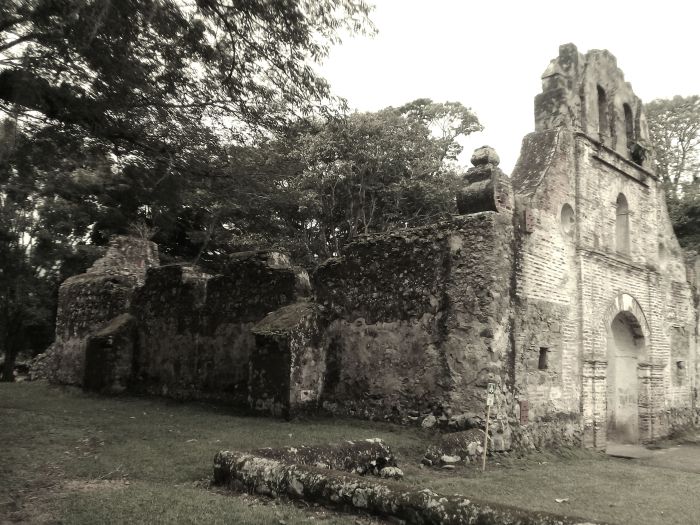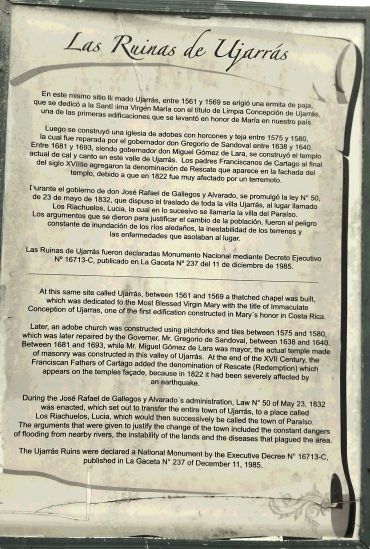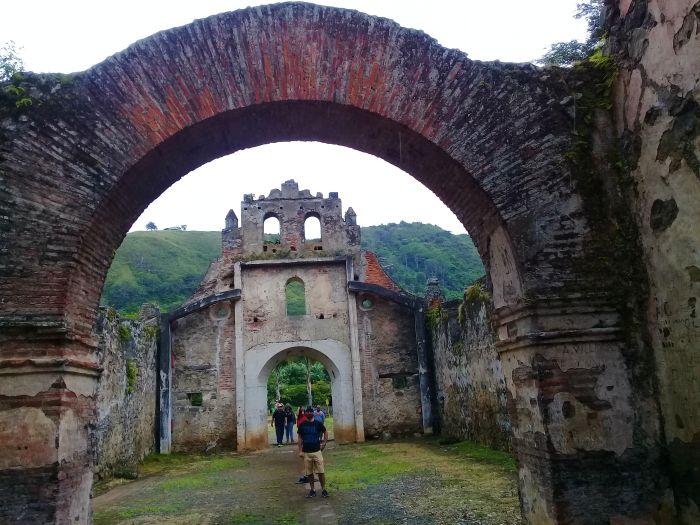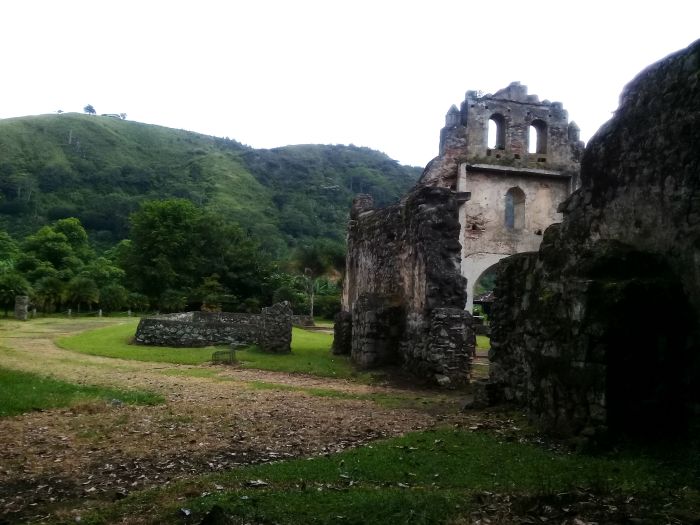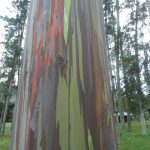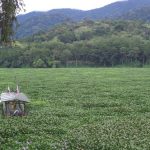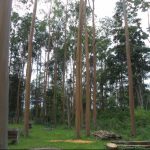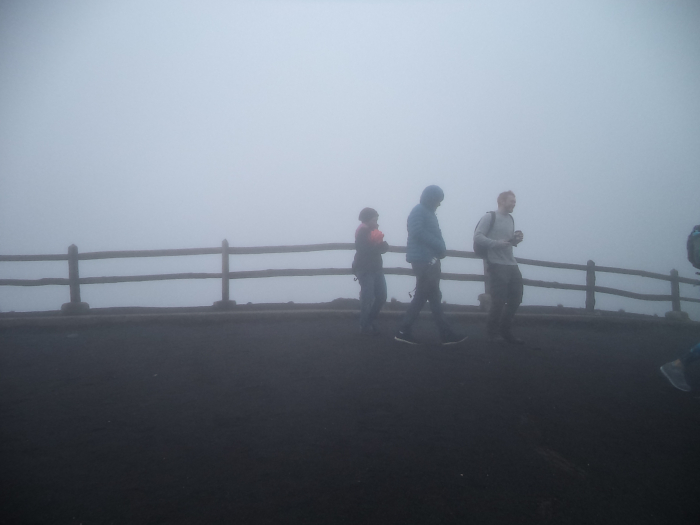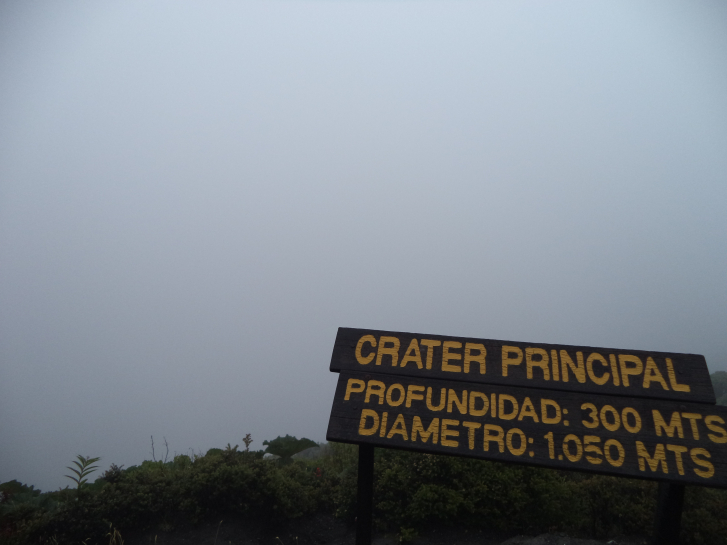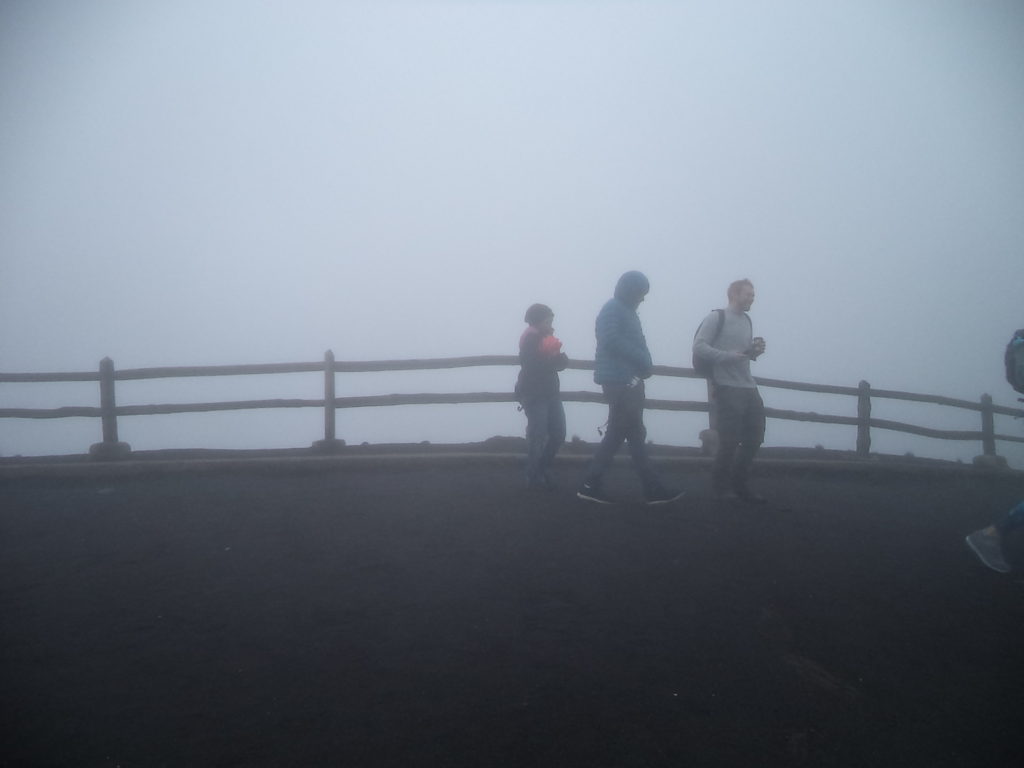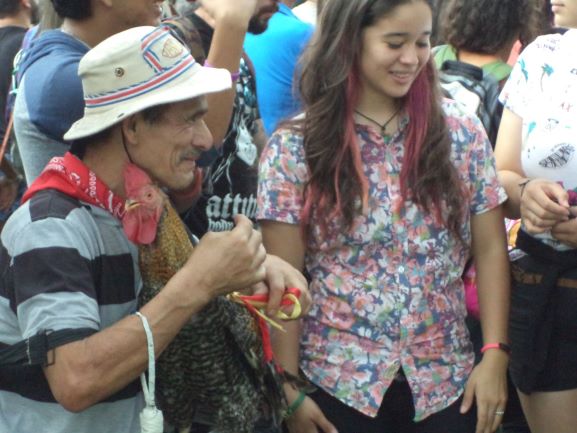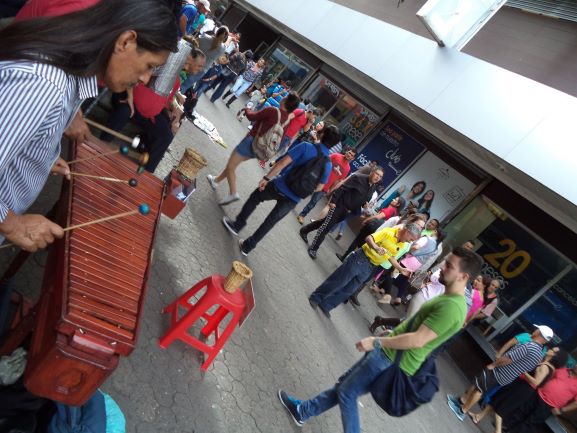The site of Las Ruinas de Ujarrás is surrounded by luscious green countryside, immaculate landscapes, winding rivers, and pristine mountains. Located deep in the Orosi valley, near the Cachí Reservoir, visitors experience a bond to the historical foundations of colonial Costa Rica as they approach the park containing the remains of the church (La Iglesia de Nuestra Señora de la Limpia Concepción). Once inside the monument grounds, you can literally touch history.
Built in the 1580’s, local legend states that a fisherman of the Huetar discovered a box containing a painting of the Virgin Mary and the church was built on this site. The Virgin Mary had thus been considered a protector of the village.
La Iglesia de Nuestra Señora de la Limpia Concepción, or what remains standing can be approached, touched, and adored. As you near the ruins, the history is palatable and the senses are alerted to the reverence that belongs to such structures throughout the world. From the stone pathway to the limestone altar, Las Ruinas de Ujarrás creates a sense of awe. Visitors walk through the large and still nearly perfect archways to the inner chamber that was once where the congregation would pray together.
Outside of the church, you see the buttresses still supporting the outer walls of the edifice. Moss grows peacefully all along the masonry. It is a scene from a fairy tale with the mountains in the background. Nearby the church stands a beautifully sad tree that is probably as old as the church itself, weeping in the common area as families picnic, play, and admire this brilliant monument.
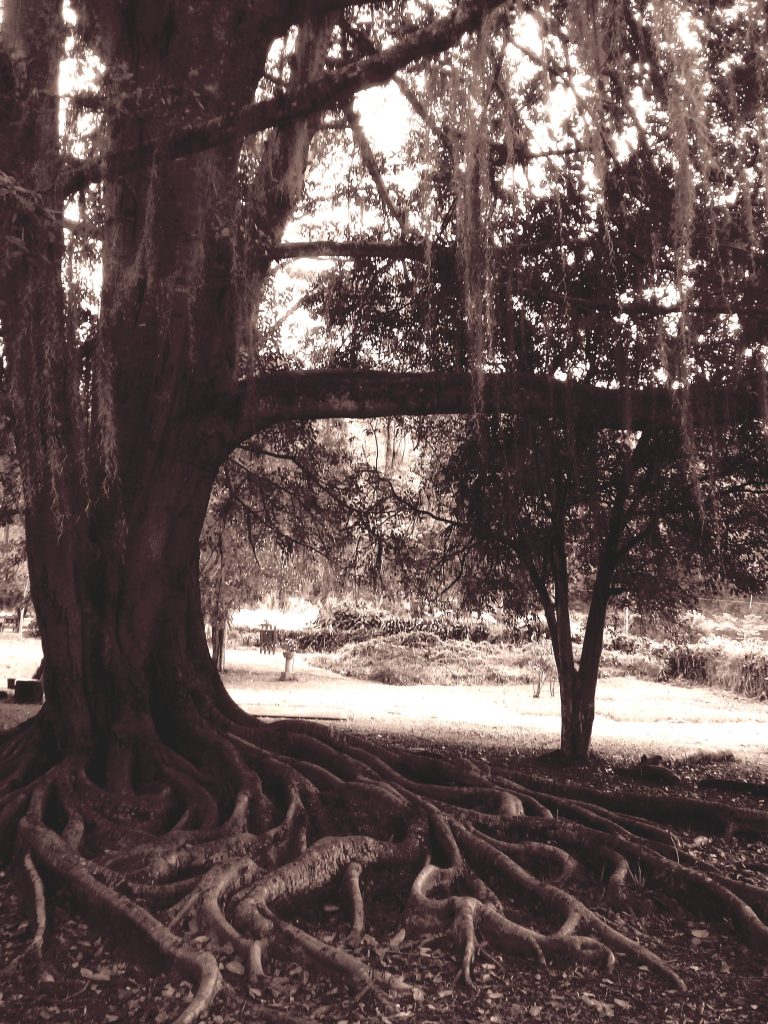
There are many places to visit in Costa Rica, but not many with such a peaceful and elegant grace as Las Ruinas de Ujarrás. For lovers of history, religion, or just serenity, this site has enough beauty to slip away into a simpler time.
Sources:
http://www.lacasonadelcafetal.com/las_ruinas_de_ujarras
Similar to many other nations around the world, Costa Rica has a strong celebration for the nation’s independence. September 15th marks the day that Costa Rica was granted its independence from Spanish Colonial rule in 1821. The date was the final victory by Mexico in the Mexican War for Independence. After Mexico’s victory, “Guatemala declared independence on behalf of Central America.” (www.costarica.com) Spain granted the claimed independence without further conflict.
- “Independence Day celebrations begin on September 14th, when the Torch of Freedom arrives in Cartago.” Many young children will crowd the street with hand-made lanterns that are symbolic of the Torch of Freedom. That night, when the torch reaches the final destination of Cartago, the original capital when independence was claimed, the entire nation stands to sing the national anthem. The rest of the celebration takes place on September 15th with street parades honoring traditions of the nation’s forming. These are held in every town throughout the country. (www.costarica.com)
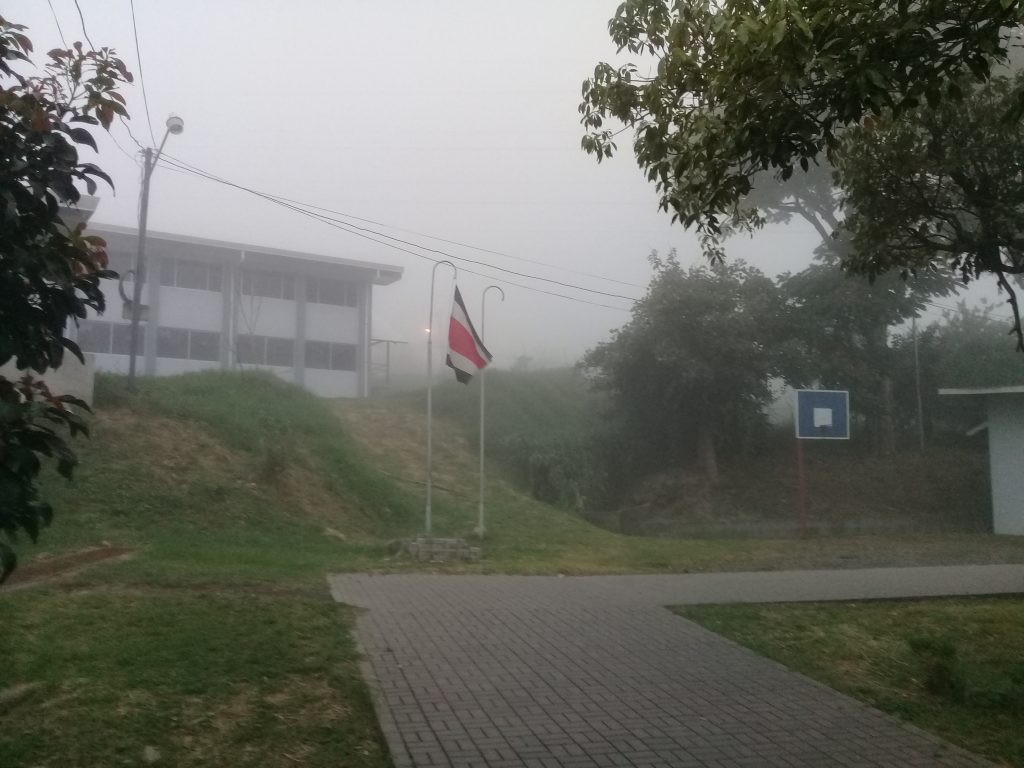
With that little piece of history in mind the author decided to ask Costa Rican’s what Independence Day means for them. The results below are told by former and current students in Idioma Internacional’s program, and give a much broader understanding of what Independence Day truly means to the people.
What does Independence Day Mean for You?
- “Everything that the Costa Rican people did to be today the country [it] is… every year that passes since we [became] independent we must try to love and protect the country more and make it a better place for the future generations” -Axel H.
“[T}he day of independence is one of the days where Costa Ricans unite to celebrate the importance of being an independent and democratic nation. Also, it is one of my favorite days of the year for the colorful parades, the hymns, “la marimba,” that are part of the national identity that we can still enjoy in the country.” -Cameron Z.
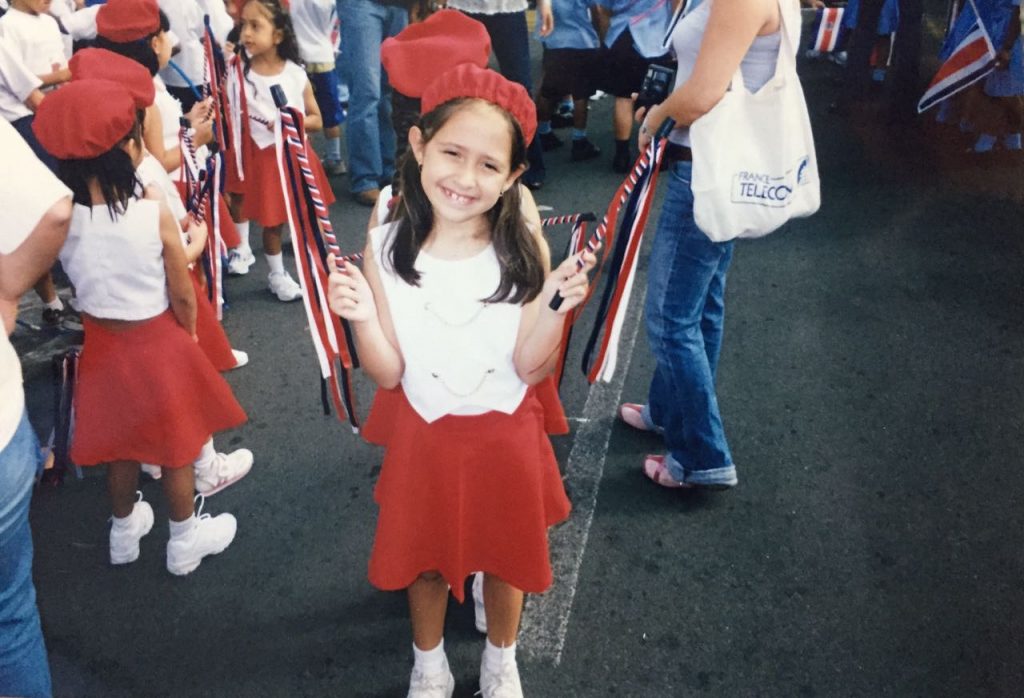
“For me [it] means peace, love to Costa Rica… the country in that moment shows [strength] and power.” -Noelany A.
“It’s a free day! Haha! In Costa Rica a little percentage of the habitats don’t have traditions or celebrate so much that day… [However], so many people have the tradition to go see the Patriotic March, with bands and mascaradas. In the schools, [we] celebrate that date [all] week (Civic Week) and all days [we] sing the national anthem and have activities. For me, it’s another celebration!” -Jeison V.
“Independence means peace, love, pride, and sacrifice. It’s a special day to commemorate all those who fought for freedom.” -Melannie M.
“For me Independence Day means liberty. It is something that [changes] our perspective about the world. It changes the reality of Costa Rica, [and] our economy increases. When we see the nature, it reflects the most beautiful part of our nation. When we go to our traditional parade in San Jose, we enjoy the music, the dancers and also we feel proud our country is without an army! We think about the poor areas and just want to eradicate all their problems. I feel proud because we don’t have an army and we spent the money on education!” -Edwin B.
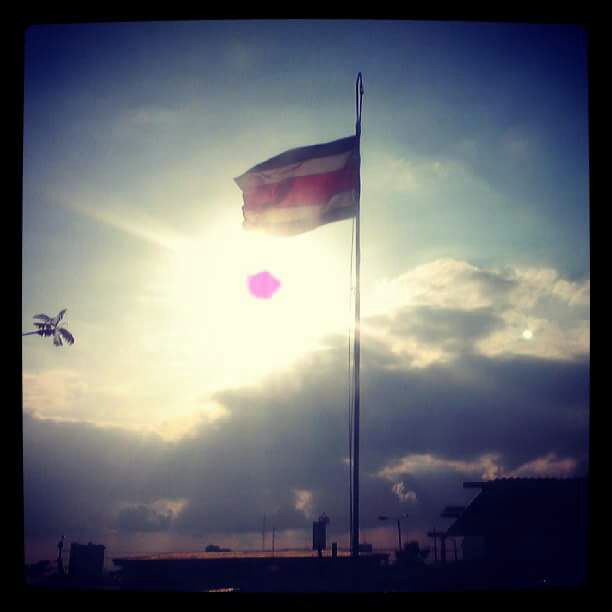
“For me this day is important and very significant for us because since that day we receive the most valuable feeling that we have as human beings: Freedom. We as citizens of this country have the privilege of saying that we live in a country that solves any conflict with a dialogue and not by fighting because everyone has the freedom to express what they think. That’s a privilege that not all countries have and we must appreciate it and celebrate for that!” -Tatiana O.
“Independence Day is a synonym of freedom, and it means that we have the opportunity to reflect [on] our identity. [It is] one of the multiple reasons to be proud of our beautiful country. It means peace, gratitude, happiness, opportunities, development, growth. For me Independence Day is a reminder of how Pura Vida we are!” -Alexandra M.
“For me, Independence Day means like a celebration of our freedom because we were slaves of the Spanish people. Our culture was given back to us. Also, to give honor to those who fought for us to set us free. And to live in peace with all the countries around the world.” -Dariana D.
Part of being an ESL teacher is having to say goodbye. We watch students learn, grow, and become more and more fluent in English. It is a beautiful thing to see so many students progress and get ready to make the next steps in their lives. However, it is also, always a mixed bag of emotions. The only way for me to describe it properly is to tell the story of three of my classes that graduated our program and are moving towards their new phases in life.
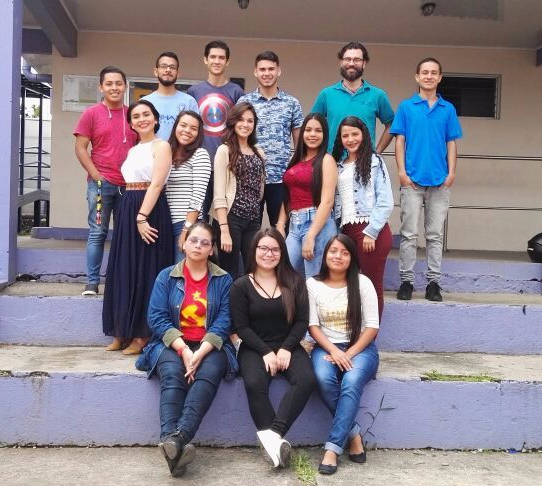
In order to put this in the correct context, I will start from when I first met my classes. All three classes that I had were taken over from other teachers who had to leave because their contracts ended, or they were assigned other classes that conflicted with the schedule of these. I had observed two out of the three classes. During the observations, I was able to see how wonderful these students really are.
Once I was given the classes, I truly connected with the students and found my initial reaction to be absolutely correct. Each student was individually brilliant, and as a whole they made class time incredibly fun. I worked for them for three and a half months. It is not a long time in the grand dance of life, but it was sufficient to understand what kinds of people they are. If every teacher had students like mine, this profession would be saturated with applicants.
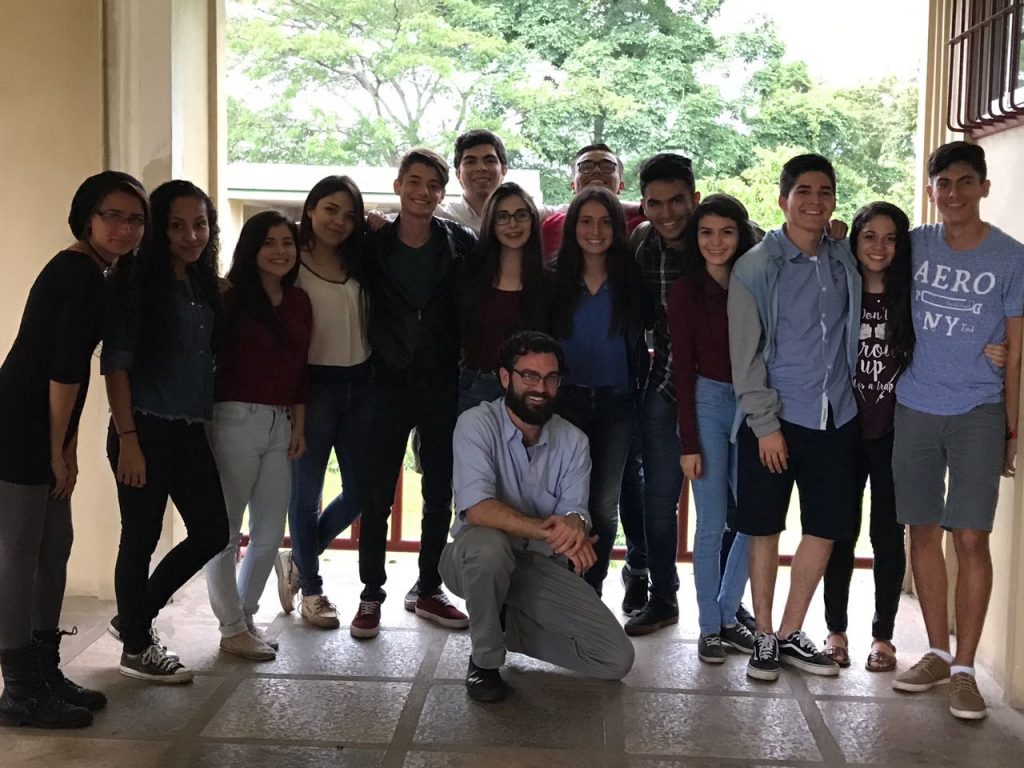
Anyway, after working with them for that time, the end had come near. I only had one last week with them. As the final class for each group approached, I began to feel melancholy. I knew they were excited to be finished. I would have been also, in their shoes. I prepared the lesson with a sinking feeling in my chest. I knew I would miss them, but I didn’t think it would actually affect me this heavily.
I kept the lessons light and fun on the last days. All the students wanted pictures of the entire group, including myself. It was very special to me. I felt more like a part of something than I had in a long time. We took many group photos, made sure that we all looked happy and then finished the class with some good group discussions.
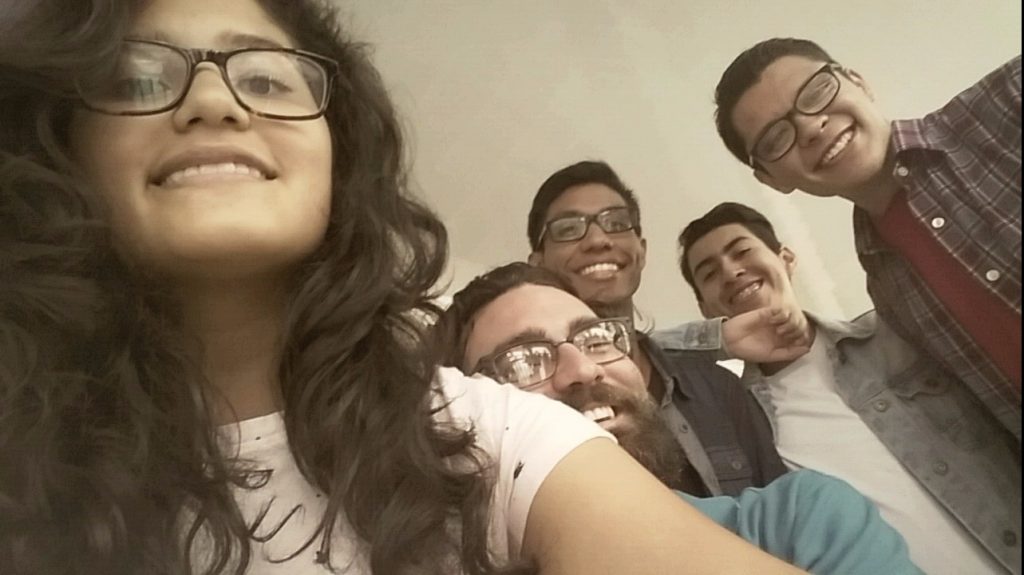
It was the end of the final class. I had all the students packing and preparing to leave. I had my bag organized again, the whiteboard cleared, the chairs put up. Then we all stood there looking at each other. I could tell this was going to be the hard part. I could sense the emotions like a bird senses the dawn. I told them that they could leave, class was over. Then, almost in a resounding chorus, they replied, “but teacher, we don’t want to leave.” I could have cried right then. My heart swelled with admiration and a massive sense of appreciation. These students, who were going to school for 7-9 hours a day, and then more class on Saturdays had just told me they didn’t want to leave! I did cry. It was so meaningful to me.
We left together since we couldn’t leave one by one. We got towards the exit and exchanged our cordial goodbyes (I wasn’t crying anymore). I know that they will go on to accomplish great things. I know that they need to be finished and out of the program. I know that they taught me more than I could ever teach them.
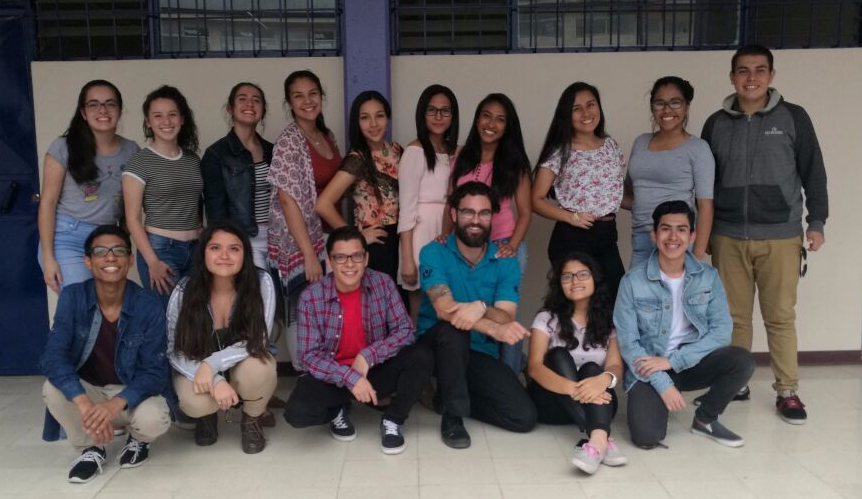
- Mother’s Day is celebrated in many countries throughout the world. In the US it is typically on the first Sunday of May. Although there are many shared holidays between the US and Costa Rica, Mother’s Day is not one of them. Here in Costa Rica, Mother’s Day is celebrated on August 15th. This corresponds with the Roman Catholic feast day of The Assumption of Mary. “The Assumption of Mary is a feast day recognizing the selfless and earthly life of Mary and the divinity associated with her heavenly soul,” according to http://www.prosoftnearshore.com/mothers-day-in-costa-rica-august-15/. Unlike the US, Mother’s Day in Costa Rica is National Holiday. The entire day is dedicated to celebrating our mothers.

Although it is important everywhere, the dual purpose of the holiday here in Costa Rica shows how much respect and honor we have for our mothers. There are many ways that people celebrate this very special day. Some of which include buying all types of gifts, taking mothers out for special meals, and making sure they don’t have to do any work. Mainly, the mothers that I spoke with on this day just wanted to be surrounded by family and loved ones. It is most important to make sure they know how much you love them.

“Ma! You get to celebrate twice a year while I live in Costa Rica,” I told my mother when I called in May. She loved the idea. Even though I wouldn’t be able to fly home and visit, we were able to speak on the phone for a few hours. We digitally cheers-ed each other, and drank some wine. Even though this article is a little after the fact, every day could be Mother’s Day. So please don’t forget to tell your mothers that you love and respect them. Every day would be ideal, but we know that’s not always possible.
On that note, I love you MA!

Although Costa Rica celebrates many national holidays, there are few as vibrant and culturally inclusive as the Annexation of Nicoya to Costa Rica (Guanacaste Day), which takes place on July 25th. Unlike most annexations throughout the world, the annexation of Nicoya, and thus the province of Guanacaste, was made possible by the request of the inhabitants, not some militant coup, uprising, or any such violence.
Prior to annexation in 1824, the province of Guanacaste (including the incredibly beautiful Nicoya Peninsula) was part of Nicaragua. At the time, Nicaragua was struggling with unrest and civil war which led the inhabitants of this region to request to be annexed to Costa Rica. The Central American Federation approved the request and the region became part of Costa Rica. Being that the inhabitants were the catalyst to annexation, the saying “de la patria por nuestra voluntad” (literal translation: of the country by our will) became an illustration of Costa Rican democratic values. *
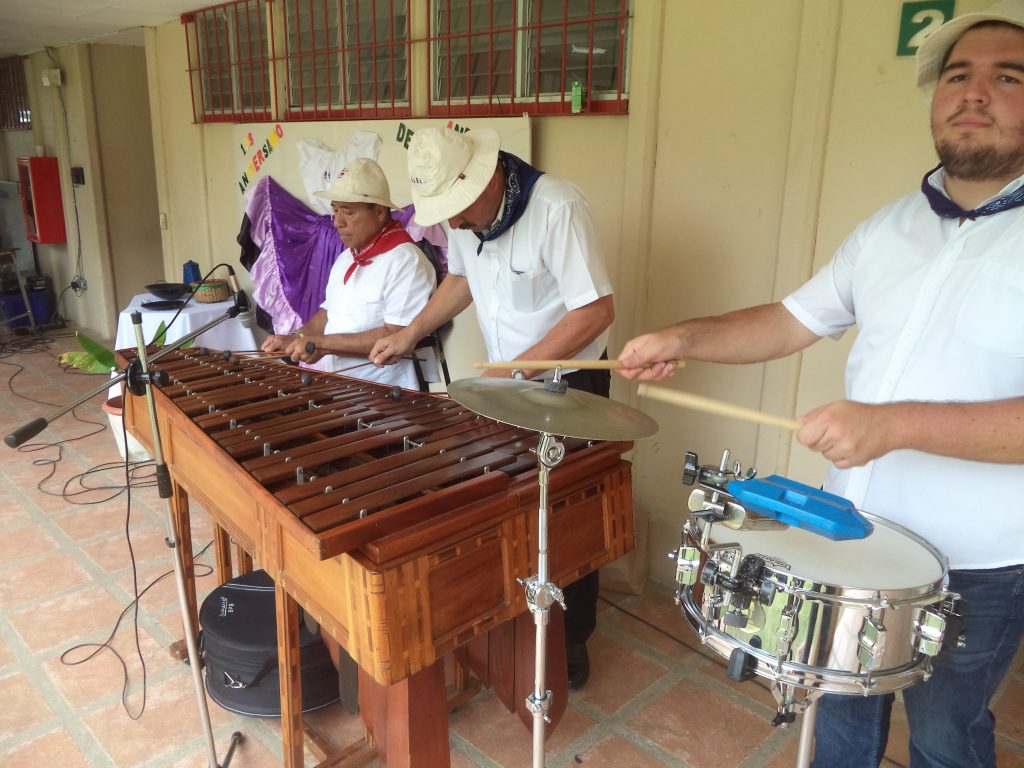
Here in San Jose, I couldn’t participate in a full-scale celebration. However, by the invitation of my students, I was able to gain access to a sample of the cultural festivities. Their colegio, or high school, held a small festival that celebrated by showcasing the cultural diversity of the entire nation.
I took the bus out to the colegio and was met with open arms. The students, as well as the administrative staff, led me to a seat in the front row to watch the final dance number. (I was there before other members of the public were allowed to visit, but missed some of the other presentations). I felt so welcome with my smile stretching from ear to ear. The dance number concluded and I began to mingle with the students and faculty. A band listlessly played classical Costa Rican music, booths were being manned by the student presenters, and the food was quickly prepared.
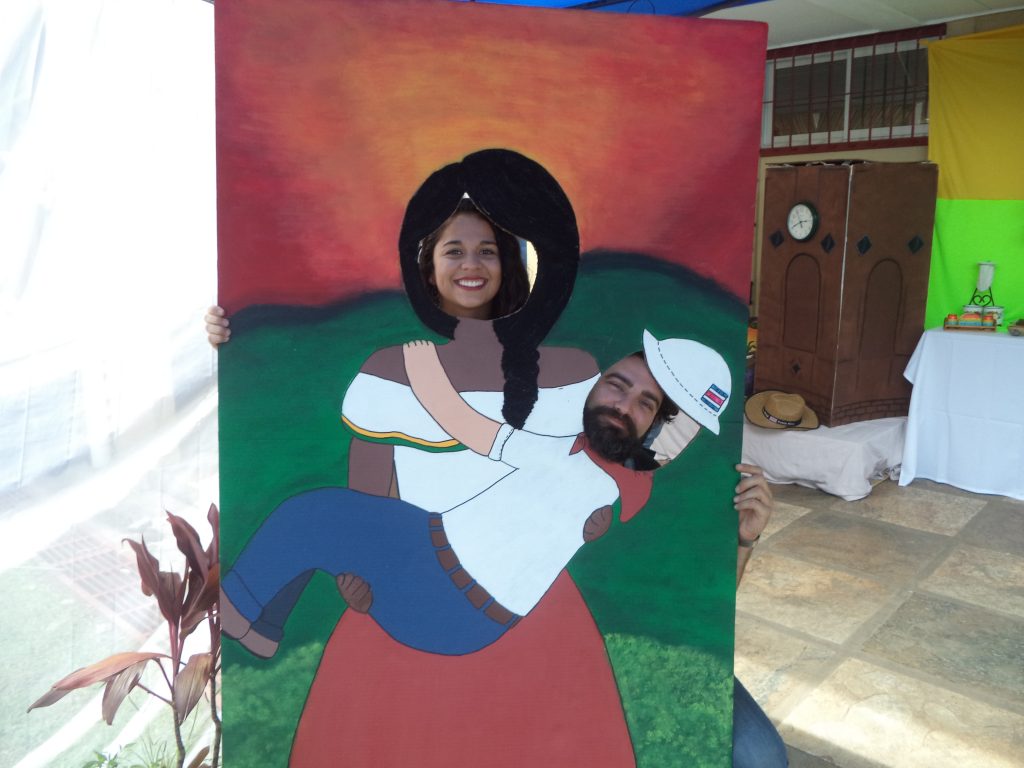
Some of my students quickly found me and began to show me around. Each class represented a different province and gave historical presentations, offered typical food, played music, and adorned decorations. Before I knew what was really happening I had a plate of corn tortillas with natilla (similar to sour cream), corn on the cob, and arroz con leche (sweet cream with rice). I tried to pay, but my students refused to allow that. I felt so incredibly welcome. After I conversed with a few more students, I made the rounds to see each of the provinces represented, listened to the histories in Spanish, and ate or drank something from each booth. The experience was incredible. I will forever be grateful to my students for inviting me to such a wonderful cultural learning experience, and for showing me an amazing time.
Not only is this National Holiday a symbol of the democratic values of Costa Rica, but it is truly a time to celebrate all of the cultures that make Costa Rica the rich and diverse country that it is today. Without seeing something like this first hand, I would have never known the importance that Costa Rica places on its very core. The people will always come first and especially their individual values and traditions.
*http://www.costaricaguides.com/guanacastes-annexation-to-costa-rica/
Act II
After leaving the mountain, things began to improve. The cloud we occupied did not follow us down the mountain. We were able to pull over for some the best views I have seen since arriving to Costa Rica. It was also significantly warmer as we made our way down.
Then, my boss and driver had a brilliant idea. He knew of another national park with a large lake that was formed after they installed a hydro-electric power plant. Also, his kids wanted badly to go to said park for a “really awesome” swing that they have there. (It was really awesome). This heavenly place is known as Charrarra.
This park was incredible. The greens were so vibrant and the place swarmed with life. Immediately after arriving we saw a duck with her ducklings, a snake (not dangerous), herons, and other waterfowl. There were amazingly colorful and large eucalyptus trees throughout. The lake was covered in a thick-batch layer of lilies. Some of the ones close to the shore were in full bloom. They had such a majesty.
The group all enjoyed some cold beers together and then we made our way around exploring the park. We wandered down some horse paths and decided it was too risky to dodge the apple grenades. After we had climbed into a model airplane designed for 4 to 6 year-olds, used a 4 person gravity spinning swing, and played some quick toss frisbee, we made our way to a low point lookout that was stunning. Unlike the peak of the volcano, were able to see straight across all of the lake.
- After a few gallivanting hours, we were all feeling hungry. We went to a local hotspot for chicharrones and enjoyed a lovely and reasonably priced meal before we made our way back to the city. The moral of the story: even a “bad” start to the day here, can end in wonder and amazement.
Act I
“Be sure to bundle up,” they said. “It’s colder than you would think,” they said. “Bring snacks,” they said.
Bundle up? Cold? Okay, snacks. That makes sense. We are talking about Costa Rica, right? Home of the most beautiful beaches, rainforests, and mountains in the world? Same Costa Rica? Yes. THE Costa Rica. We were heading to one of the iconic volcanoes that give the breath-taking views that Costa Rica is known for: Irazú Volcano. I couldn’t imagine anything cold. I don’t think most people would.
We awoke to a partly cloudy sky in the central valley. Birds were singing to celebrate the morning as they always do. Early mornings on the only collective day off for the staff is always a little sketchy. Not that everyone is opposed to getting up early, just apprehensive. However, all members of the party showed up on time. We were excited to see the dormant volcano.
The drive up was no peach. It rained, the fog was terrible, and there were no signs of it improving. Well, there was one time where we saw a slight opening to the cloud cover. It was a tease. We got to the peak, where the gift shop and parking lot are located, and stepped into a cloud. Literally. You could barely see 10 meters in front of you. It was windy. It was cold. It was atypical to the image of Costa Rica.
We huddled into the gift shop to escape the rain. They offered hot coffee or cocoa at tourism prices. Some of us paid. My fingers were very much going numb standing in the wet, windy cloud. We resisted the walk to the crater observation, hoping the conditions would improve. They didn’t. Eventually, we made the short walk anyway. The landscape screamed of a horror movie. Bleak, desolate, low-visibility. Perfect for mischief. (None occurred.) We peered over the edge, where one would normally find the crater, and saw more of the same mass of cloud we were standing in. Disappointment abounded.
After snapping a few pictures of our other-worldly landscape, we headed back to the warmth and safety of the cars. The volcano will have to be visited another time. Stay tuned.
As buses careened through the streets, much of the city went about its Saturday as though there was nothing special. Perhaps there wasn’t. However, for the droves of people that made their way into central San Jose, the day was the height of excitement. The Festival Internacional de Las Artes was in its final stages. For 2 weeks (June 19 – July 9) FIA had captivated audiences with live music, stunning acrobatics, theatrical shorts, and so much more.
Crews of bulking men and machines were placed about the city in modes of work. The grounds were tended appropriately for the day to steal the imagination, sway the open-hearted, and dissolve the insistence upon reality. The cornucopia of culture quickly sated the hunger for collective belonging.
The walking avenues were packed. Street vendors plied their wares. You could find anything from socks, groceries, and fidget spinners to jewelry, DVDs, and pocket knives. The list is always endless. Whether looking for a quick bite or some live local accompaniment to your walk, the avenues are perfect for exploring the city life of San Jose.
Approaching the main festival staging areas, you could hear the music beating through the buildings, calling to the soul. The local pubs were filtering the thirsty in and out of the doors as breaks in the stage activity allowed time for refreshment. The courtesy offered to the traveler was incredible. Laughs were had over a few shots of chiliguaro and names exchanged. Offers were made to come sit with the perfect strangers. The demeanor here is truly “Pura Vida.”
The park and main stage at plaza de democracia were crowed with excited onlookers and music aficionados of all ages. Feet tapped, hips shook, heads bobbed. One man danced enthusiastically as the flute player on the stage hit the crescendo and the band followed suit with an invigorating folk masterpiece.
Leaving the stage area it was a short walk, about 3 minutes, to parque nacional. Here, for those not as thrilled by music, there was a pop-up mall of international and local vendors selling every type of art you could imagine. 2 more stages were also in place with live theatrical performances and physical comedy. The crowd mingled tirelessly, but as casual as though this sort of event happened every week. Lovers caressed, teenagers assembled, families played. The feeling was serene.
The FIA was and will continue to be one of the staples of the Costa Rican “summer.” There were too many activities to attend all or even most, but there is certainly something for everyone going on the entire time. To miss it, you would have had to avoid the area completely with your eyes closed, ears shut, and cynicism in full swing.
An unexpected fire in Barrio Cuba in late September brought the Idioma community together again. Near our office on Paseo Colon, our neighbors’ homes in Barrio Cuba were hit with a fire that ruined everything and left its tenants with nothing. Because of the sudden urgency of the situation, Idioma Cares rallied in a short amount of time to bring in as many donations from the team — clothes, food, hygiene products, etc — to give to Asociación Obras del Espíritu Santo in Barrio Cristo Rey, near where the fire happened. La Asociación is a large Catholic organization whose main job is to help the people in any type of situation. We were able to collaborate with them and they were thankful and astonished by the amount of people that Idioma Cares brought with them.

Along with donating items, many teachers and administration volunteered their time to help sort through the donated items with La Asociación. Outside, some volunteers carried boxes from the loading trucks and counted each type of item with the workers. Other volunteers helped with posters inside. I was impressed but not surprised by how willing the Idioma team was to donate their items and their time. What was even more amazing that after our allotted time with La Asociación, some of our team stayed extra and helped.
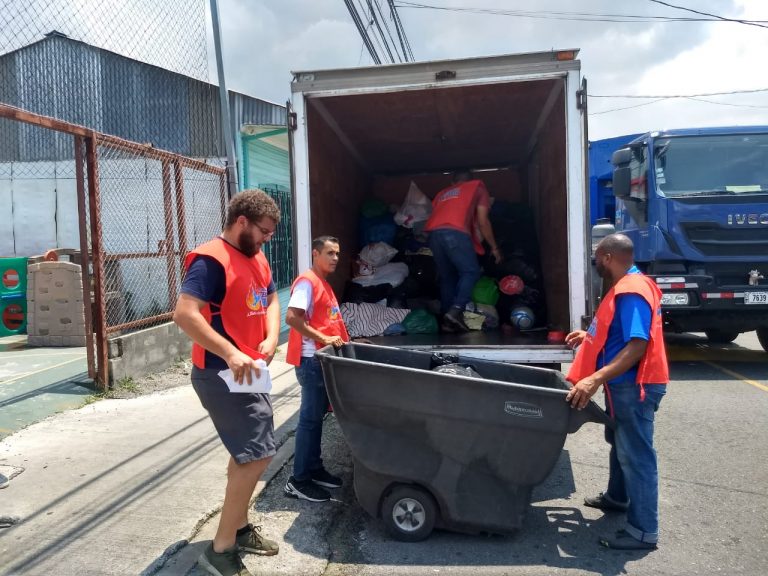
Without hesitation everyone who donated, whether it was donating goods or donating their time, did it with a positive attitude. Idioma Cares was fortunate to work with a highly-established and well-known organization that deeply cares for its community. This shows just how much we can accomplish together. Within a span of a few days, Idioma brought in numerous boxes full of items and volunteered their time to help. We continue supporting those around us because we believe that doing good makes the world a better place.
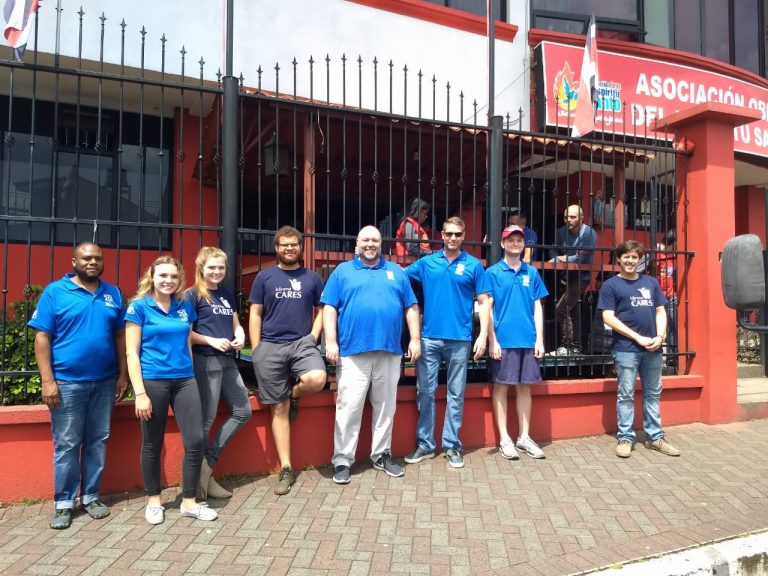
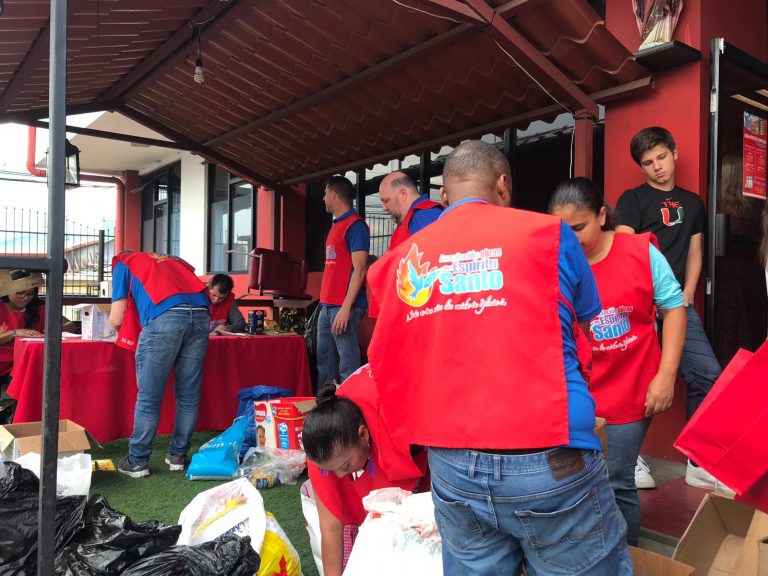
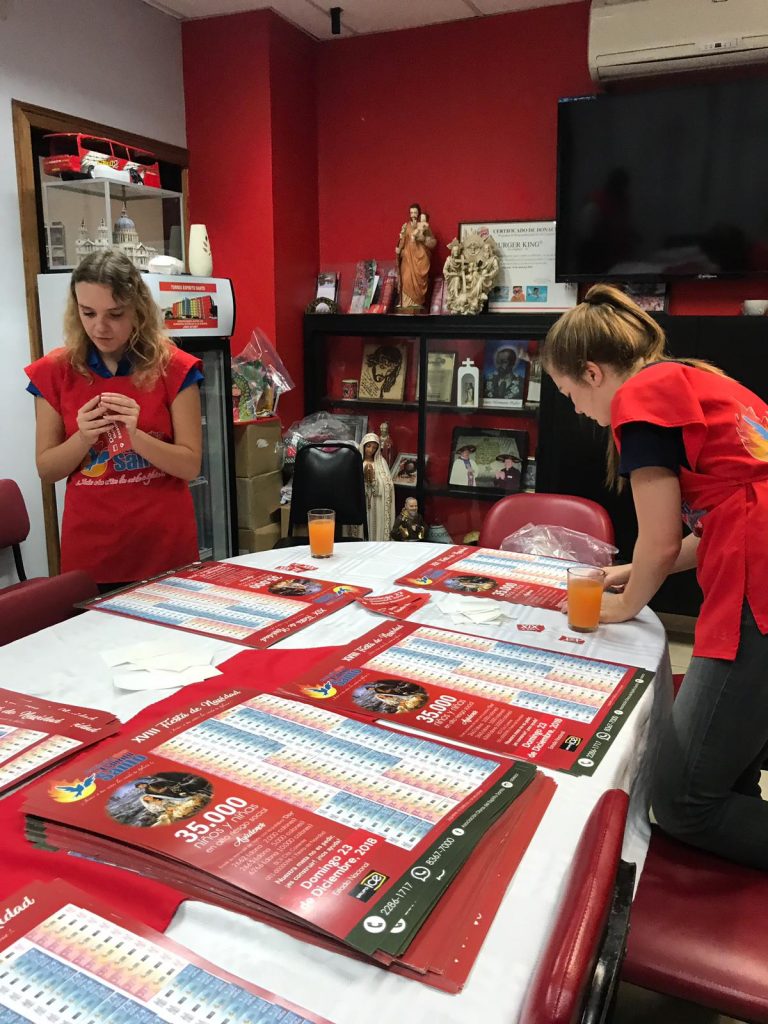
-Kim Barnes


